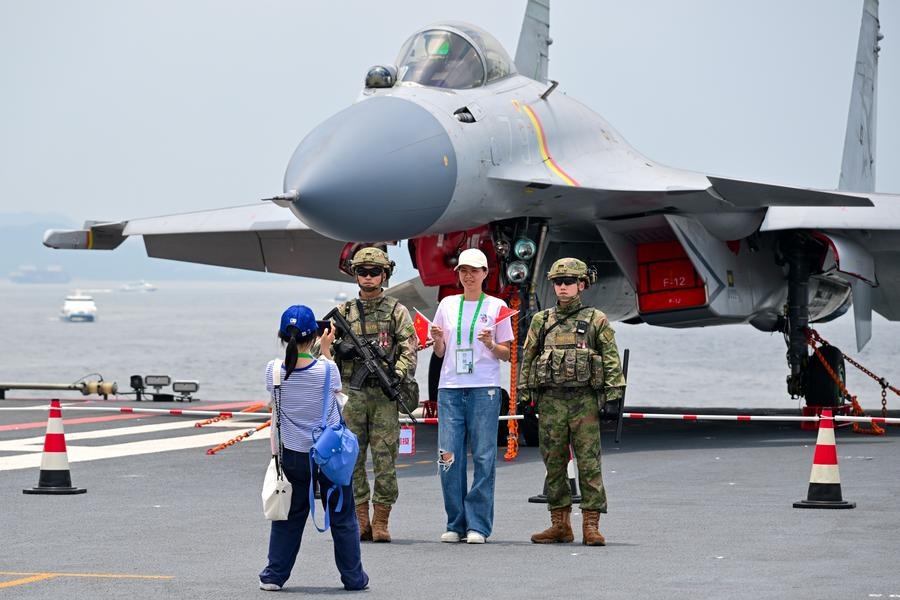Nation looks to its economic resilience
Policy initiatives made amid challenging times

 SONG CHEN/CHINA DAILY
SONG CHEN/CHINA DAILY
Most of the latest economic indicators point to continual weakening of China's economy, with industrial output, fixed-asset investment and retail sales growth all falling by varying degrees in October.
Worse still, consumer prices surged past the 3 percent annual inflation control target, reaching 3.8 percent in October, a situation seldom seen in recent years and which is set to limit the scope for monetary policy loosening to boost growth.
Against a backdrop of slowing global economic growth and lingering uncertainties as a result of trade frictions between China and the United States, the way in which Chinese policymakers stabilize economic growth has attracted attention both at home and overseas.
Economists have suggested that the authorities further strengthen monetary and fiscal policies to stop the economy slowing.
"We must adopt a proactive fiscal policy, and the focus should still be on infrastructure investment," said Yu Yongding, a senior economist at the Chinese Academy of Social Sciences.
Yu said that when the economy was growing at a rate of about 10 percent, he had advocated structural reform aimed at improving the quality of growth. "But now the situation has changed; economic growth has been continually declining and, therefore, ensuring (stable) growth and preventing a further slowdown have become the main contradictory aspects," he said.
While structural reform should continue, this is more of a task in the long run and should not be the top priority in the short term, he said.
The economy expanded by 6 percent year-on-year in the third quarter, down from 6.2 percent in the second and 6.4 percent in the first, raising concerns that it may continue to slow and cause more problems, such as financial risks.
"China faces the harshest challenges and difficulties this year," said Yao Jingyuan, former chief economist at the National Bureau of Statistics, who defined the current situation as "complicated and with in-depth contradictions".
"If we don't take effective measures, it cannot be excluded that our GDP growth may dip below 6 percent in the fourth quarter or early next year," he said.
In addition to well-quoted factors, such as weakening global demand and the China-US trade dispute, Yao said the failure to ensure healthy development of the real economy is also a major cause of the current economic predicament.
All-out efforts
In August last year, the central authorities said all-out efforts would be made to ensure stabilization of the job market, the financial sector, foreign trade, foreign capital inflow, investment, and market expectations. Since then, this determination has been reiterated at various high-profile government meetings.
"A growth rate not lower than 6 percent should be the bottom line for the Chinese economy," Yu said. "It is the most important and urgent challenge for China to prevent economic growth from continuing to decline."
Yu said that given its high savings rate and large amounts of government-controlled assets, the country still has plenty of scope for monetary and fiscal policy maneuvers to boost growth.
The latest policy move came on Nov 27, when the Ministry of Finance said it had recently assigned in advance part of next year's local government special bond quota, worth 1 trillion yuan ($426 billion), and had ordered local authorities to issue the bonds as soon as possible to support investment programs.
This move will unleash funds for local governments to finance public investment projects to generate demand and counter downside pressure.
China made a similar move at the end of last year, but the quota then was 810 billion yuan. The increased quota this year means infrastructure investment may rise significantly to boost growth in the first quarter of next year, according to a research note by CITIC Securities.
Zhang Jun, chief economist at Morgan Stanley Huaxin Securities, said China still has a lot of room for fiscal stimulation, but he warned at a forum on Nov 30 that the problem of local government debt should be handled well.
By the end of last year, this debt stood at 18.39 trillion yuan, while central government debt was 14.96 trillion yuan. This meant the overall government debt ratio stood at 37 percent, well below that in many developed economies and major emerging-market economies, according to a statement by the Ministry of Commerce.
Yu, from CASS, said, "We should not underestimate the severity of local government debt, nor should we overestimate it." Expansionary fiscal policy, if it can boost growth, will help lower the debt-to-GDP ratio, he said.
In addition to fiscal measures, the nation has lowered the actual cost of borrowing, with the People's Bank of China, the central bank, cutting the seven-day repurchase rate on Nov 18, the first such easing in four years.
Opinion mixed
However, economists remain divided over whether China should cut its benchmark interest rate to boost growth.
Yao, the former NBS chief economist, said, "There's room for cutting banks' reserve requirement ratio and the benchmark interest rate next year."
But Zhang, from Morgan Stanley Huaxin Securities, said the necessity to lower the interest rate in the short term has eased.
He said the wave of global interest rate cuts seen since last year is expected to take effect early next year and start to ease economic slowdown pressure worldwide. Therefore, it is no longer urgent for China to cut its interest rate.
While it remains to be seen whether the interest rate will be cut, the country has long been known for its economic resilience.
One sign of this came last month with a rebound in manufacturing activity. The manufacturing Purchasing Managers' Index broke into expansionary territory, reaching 50.2, up from 49.3 in October, and ending a six-month contraction. The index indicates expansion when it is higher than 50, while a reading below this mark indicates contraction.
Hu Yuexiao, an analyst with Shanghai Securities, said, "China's economic resilience is reflected by both its growth stability amid risks and challenges from both home and abroad and its ability to foster new growth drivers."
According to a report released on Nov 17 by economists led by Liu Wei, president of Renmin University of China, and Su Jian, professor at the School of Economics at Peking University, GDP growth may reach 6.3 percent this year, still within the target range set by the central government.
- China, Myanmar, Thailand hold ministerial-level meeting on telecom and cyberspace
- Prado in virtual reality
- Shantou education department suspends classes due to Typhoon Danas
- China's scientists make breakthrough on how H5N1 influenza occurred in the US
- Civil Aviation Administration of China announces a new extension of M503 flight route
- China's ecological civilization praised by Solomon Islands parliament





































